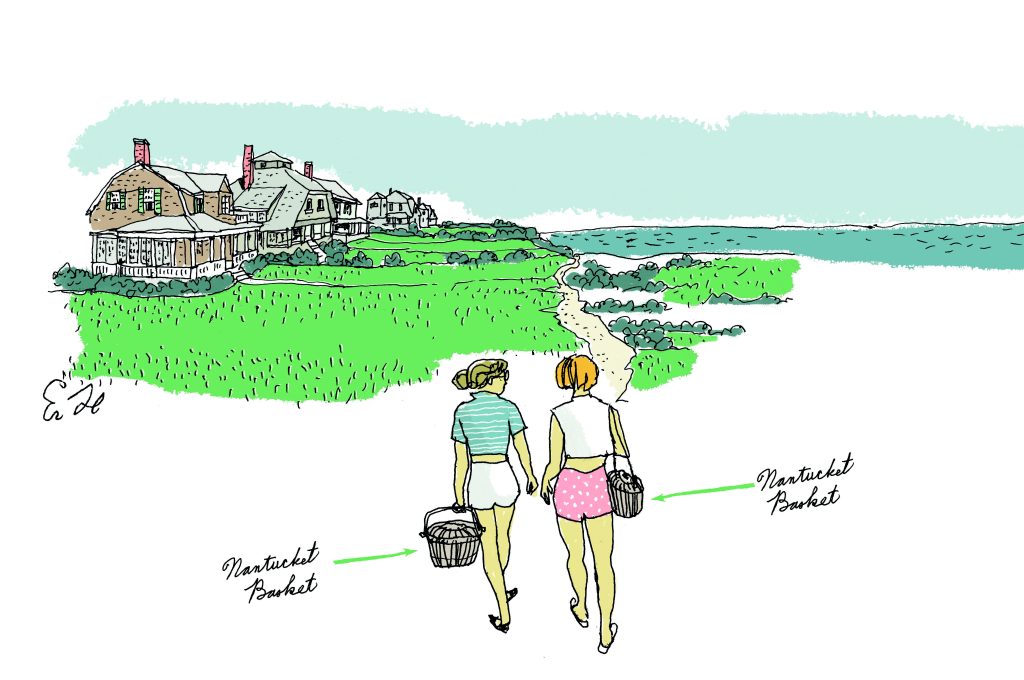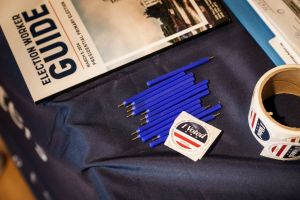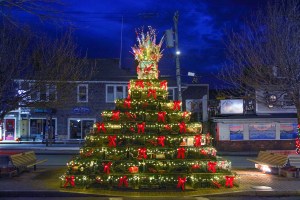Fifteen years ago, I dusted off my Nantucket Basket, which I’d carried every summer since 1964. To my horror its woven straw was unraveling. The desert climate of Scottsdale, Arizona, where we moved in 2002, had not been kind.
When I was a young woman, and received a Nantucket Basket as a gift, I knew it was to be used from Memorial Day until Labor Day. The Baskets have evolved over the last 170 years, from nesting baskets selling for $1.50, to closed baskets used as purses by islanders. Nantucket men wove them in their spare time while serving onboard the South Shoal lightship, off Nantucket.
Straw purses are now back for summer. Not that they have ever gone out of style. Many top designers have come out with baskets, including Chanel, Prada and even Hermès. In the spring of 2004, Rafe, a New York designer, came out with a purse inspired by the Nantucket Lightship Basket. The purse, made of ‘woven rattan trimmed with linen, leather and lined with gingham’, sold for $325.
It’s a bargain compared to an original ‘oldie but goodie Basket’, which can top $10,000 if really old and unique. An owner of an ‘oldie’ described the bag as ‘the ideal basket to visit Grandma’. I am a 78-year-old grandmother, and I quite agree. The structure of these high-fashion baskets reminds me of my two Baskets; originals that have been on the arms of three generations of women for more than 100 years.
Islanders began purchasing the baskets for purses in the late 1940s, when a talented basketmaker, José Formoso Reyes, began making baskets fitted with a hinged wooden medallion, usually carved in the shape of a whale, that could be carried by a wooden handle or a shoulder strap. Over a half century of summers on Nantucket and in Chatham, Massachusetts, I’ve seen baskets in all shapes and sizes, sporting all sorts of decorations. The most beautiful and unusual basket belonged to Marge Benchley, the wife of the writer and humorist Nathaniel Benchley and the mother of Peter Benchley, the author of Jaws. A close friend of my in-laws, Marge would carry the bag for parties on the Siasconset bluff in Nantucket. It was square (very unusual), beautifully aged and sported a lovely ivory scallop shell. When the Benchleys’ house was broken into many years ago, the only thing taken was Marge’s Basket! The thieves knew value when they saw it.
In the 1950s, the Reyes family began turning out cocktail Baskets that were just big enough to hold a lipstick, a compact and a few loose bills. They became the rage, a sign of Nantucket becoming a magnet for the super nouveau riche and trendy cocktail circuit. Anyone who watches Antiques Roadshow or who has a genuine Nantucket Basket knows that the price of Baskets has soared over the years. The value is all about condition and the carvings on the lids. I once saw a huge Basket on the arm of a preppy grandmother as she walked down Nantucket’s Main Street. The top had a whale, a shell and two birds. Overdone, for sure. And it was new: old Baskets have either a whale, a shell or a bird, but not all three! And the Basket didn’t have the lovely patina of age, which was a clear tip-off. Perhaps the carrier was an ‘Off-Islander’. The term was made famous by Nathaniel Benchley’s ‘The Off-Islanders’, a hilarious spoof about Russians sticking out like sore thumbs on that quintessentially staid island.
Then there are the copies. A decade ago, I saw a ‘Basket’ for as little as $12, made in Taiwan, of course. It wouldn’t last more than a season. But it did provide instant summer cachet – it had even been ‘aged’.
My first Basket was a gift from my then-mother-in-law, Tibs Krauthoff, to celebrate the joining of two old Nantucket families. Reyes, who made several Baskets for Tibs, did not make my basket, though. She had had a dispute with him; something to do with land, which has always been a prized scarcity on Nantucket, and often a sore point. A man called Sherwin P. Boyer made mine. It cost $75 and was a ‘classic’ – oval in shape, with an ivory whale on its cover, just big enough to carry my wallet, a pair of sunglasses and a lipstick.
I traveled everywhere with my Basket. I even took it to Burma a few decades ago, where it was greatly admired. In Cape Town, a lovely young woman with a basketful of food on her head stopped me with a gentle pat and asked me if I’d made my basket. It seems women from basketweaving cultures admire the effort and craft needed to weave a Nantucket Basket.
Almost everywhere I’ve been, my basket gets attention. I was sipping coffee in St Germain 30 years ago when a chic young Parisian asked where I’d bought my Basket. Was she a designer from the House of Chanel looking for inspiration? When I lived in Manhattan in the 1990s, I’d get knowing looks from ‘It girls’ as well as Nantucket summer matrons coming out of hibernation. My Basket has been a ‘passport’ for me, beginning with Tibs and my acceptance into her family.
On Nantucket, there is a three-year waiting list with good basketmakers. I took my unraveling basket to Sherri O’Donnell, a basket maker in Orleans, on Cape Cod. She told me she would fix the old one but that I should then put it away and not use it anymore. ‘It’s getting too dry out there in Arizona. It’s going to fall apart unless you do.’ She also said she would make me a new one for $800 and it would take her a month. ‘Someday, maybe one of your grandchildren can buy a house with it,’ she laughed. My old Basket is now in bubble wrap on a shelf. I carry my new Basket year-round.
In Santa Barbara, where we now live, my basket gets fewer admiring looks. California’s culture is so different to New England’s: I wonder if the baskets would even sell here. They would need to have whales, shells and birds. They’d definitely have to be big. And maybe even have some serious glitter.
This article was originally published in The Spectator’s June 2021 World edition.


















